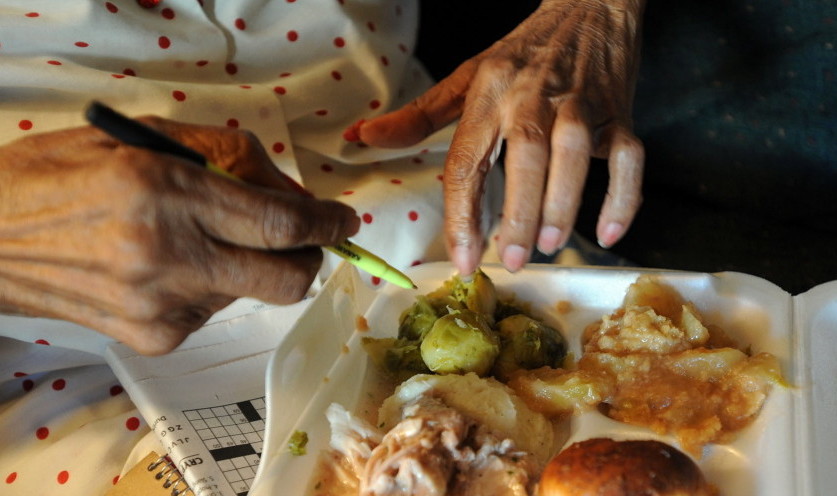It’s not a lot of money, in the whole scheme of things – a total of $130,000, spread out over the entire state, representing just a portion of the federal funding that allows the Meals on Wheels program to deliver food to hungry, often homebound seniors.
But the loss of that money, or even a delay in its allocation, certainly means something to the seniors, however few, who will miss a meal as a result. It represents another hit to the already undersupported, patchworked system that struggles to feed hungry Mainers.
And it reinforces how, with each new cut or added demand – and there have been many of both – that system grows weaker, and the harm multiplies. That leaves children and seniors hungry and unhealthy, creating a series of personal hardships that also lead to higher costs in health care and education.
THE LATEST CUTS
As part of the reduction in federal funding, the Southern Maine Agency on Aging, in Cumberland and York counties, is losing $50,000, and is considering a waiting list for the first time in its history.
Lewiston-based SeniorsPlus, which serves three counties, already has a waiting list of 106 seniors, and its cut of $18,000 will cause it to lose roughly 3,400 additional meals.
Spectrum Generations, which serves Meals on Wheels in six counties in central Maine, is losing $39,000, creating a waiting list of 14 seniors and counting who cannot get meals.
Those wait-listed seniors will either have to go into their own pockets and pay for meals out of their own fixed incomes, or seek the assistance of a local food pantry.
The same can be said of the folks whose food stamp benefits in the last year have been reduced, or eliminated entirely, because of cuts in federal spending or stricter eligibility requirements.
FALLING ON FOOD PANTRIES
As a result, the state’s many food pantries are feeling the heat.
Last year, Good Shepherd Food Bank, the state’s largest distributor to food pantries, gave out a record 21 million pounds of food, good for 17.5 million meals, a 35 percent increase from 2013.
Still, as recently as 2012, the anti-hunger group Feeding America estimated that Maine’s food safety net was falling short by 36 million meals a year.
In all, 1 in 7 Mainers uses a food pantry nearly every month. And they are not the lazy “takers” whom some picture – in 59 percent of the households who used a food pantry, the most-employed person had worked in the last year. In 43 percent, that person had worked in the last four weeks. Most of those not working are either retired or disabled.
And for those looking for a job to pull them out of poverty, the news is not good. A quarter of the open positions in Maine pay less than $12 per hour, according to a new study, hardly enough to cover all food costs for most households.
ADDING UP
All of that – the cuts in public funding, the number of seniors on fixed incomes, the prevalence of low-wage jobs, rising food costs – puts tremendous pressure on the organizations that together fight hunger in Maine, one meal at a time. They need help.
That means expanding the school lunch program, where underuse by low-income Maine families is the target of a recently created legislative task force.
It means supporting services such as General Assistance, the Women, Infants and Children program and the Supplemental Nutrition Assistance Program at levels that match the hunger problem, here in Maine and across the country.
And it means realizing that among the hungry could be the retiree next door or the young kids down the street, and that it is part of our collective responsibility, and in our collective benefit, to make sure they have access to food.
Send questions/comments to the editors.



Success. Please wait for the page to reload. If the page does not reload within 5 seconds, please refresh the page.
Enter your email and password to access comments.
Hi, to comment on stories you must . This profile is in addition to your subscription and website login.
Already have a commenting profile? .
Invalid username/password.
Please check your email to confirm and complete your registration.
Only subscribers are eligible to post comments. Please subscribe or login first for digital access. Here’s why.
Use the form below to reset your password. When you've submitted your account email, we will send an email with a reset code.